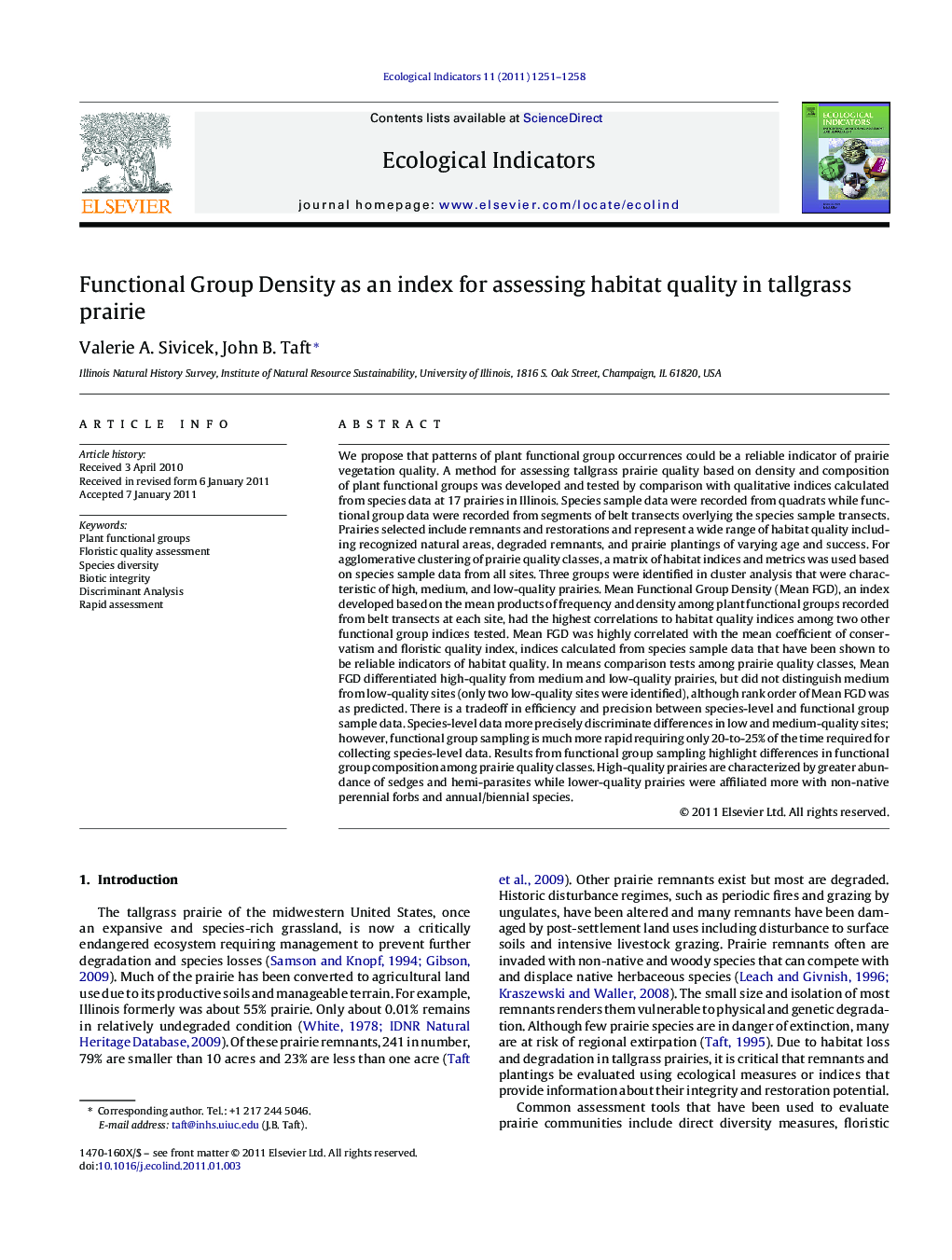| کد مقاله | کد نشریه | سال انتشار | مقاله انگلیسی | نسخه تمام متن |
|---|---|---|---|---|
| 4374061 | 1303161 | 2011 | 8 صفحه PDF | دانلود رایگان |

We propose that patterns of plant functional group occurrences could be a reliable indicator of prairie vegetation quality. A method for assessing tallgrass prairie quality based on density and composition of plant functional groups was developed and tested by comparison with qualitative indices calculated from species data at 17 prairies in Illinois. Species sample data were recorded from quadrats while functional group data were recorded from segments of belt transects overlying the species sample transects. Prairies selected include remnants and restorations and represent a wide range of habitat quality including recognized natural areas, degraded remnants, and prairie plantings of varying age and success. For agglomerative clustering of prairie quality classes, a matrix of habitat indices and metrics was used based on species sample data from all sites. Three groups were identified in cluster analysis that were characteristic of high, medium, and low-quality prairies. Mean Functional Group Density (Mean FGD), an index developed based on the mean products of frequency and density among plant functional groups recorded from belt transects at each site, had the highest correlations to habitat quality indices among two other functional group indices tested. Mean FGD was highly correlated with the mean coefficient of conservatism and floristic quality index, indices calculated from species sample data that have been shown to be reliable indicators of habitat quality. In means comparison tests among prairie quality classes, Mean FGD differentiated high-quality from medium and low-quality prairies, but did not distinguish medium from low-quality sites (only two low-quality sites were identified), although rank order of Mean FGD was as predicted. There is a tradeoff in efficiency and precision between species-level and functional group sample data. Species-level data more precisely discriminate differences in low and medium-quality sites; however, functional group sampling is much more rapid requiring only 20-to-25% of the time required for collecting species-level data. Results from functional group sampling highlight differences in functional group composition among prairie quality classes. High-quality prairies are characterized by greater abundance of sedges and hemi-parasites while lower-quality prairies were affiliated more with non-native perennial forbs and annual/biennial species.
Journal: Ecological Indicators - Volume 11, Issue 5, September 2011, Pages 1251–1258